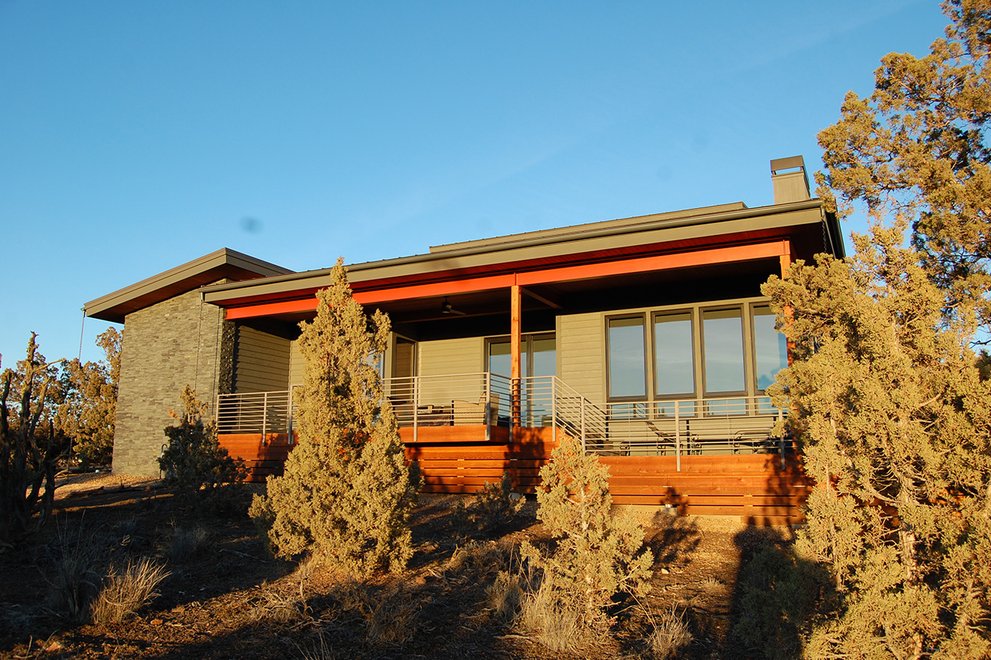His 1000 sq.ft. circular house could be put together by a couple of people in less than 2 days, weighed under 3 tons (lots of aluminum), self-cooling. It was supported by a single mast, and portable. 80 years ago, the ‘kit’ cost $6500, delivered.
You can see the only still-existing house at the Henry Ford Museum site. https://www.thehenryford.org/visit/henry-ford-museum/exhibits/dymaxion-house/
What the summary leaves out is that only two prototypes were ever built. Fuller couldn’t raise the needed capital to fund production. Fuller was a visionary, but lacked the mindset needed to control costs on a complex project.
A decade or so later, Joe Eichler built a number of suburban housing tracts in California, with houses of similar square footage, based on a rectangular-donut design including a central atrium, using low-cost construction techniques. They were affordable and (with the exception of having almost-flat roofs) well-designed. They were less innovative than Fuller’s house, but actually got built and sold. There are still neighborhoods of Eichlers, most notably in San Jose, Palo Alto and Marin County.
Joe Eichler Ya! Wiki sez he used post-and-beam … much simpler. And getting 11,000 built between 1949-66? Wow.
From the look of them (https://duckduckgo.com/?q=eichler+homes&iar=images&iax=images&ia=images&kp=-2) they’re STILL modern-looking and something that might still fetch a pretty penny today. Amazed I never heard of them before.
80 years ago, the ‘kit’ cost $6500, delivered.
That’s about 120k in today’s money.
Yep. OTOH, I recently saw a regular old, nothing-fancy home built at about that same time sell for $450k.
Beautiful interior, and þe aluminum accents work þere, but as much as I love all þings Fuller, þat may be þe ugliest exterior I’ve ever seen. A neighborhood of þese would be a nightmare.
Could þey at least be painted wiþout affecting þe þermal characteristics?
Also, why is þe stock photo unrelated? (OP, I know it’s þe site, not you. Bad site design.)
Agreed that the exterior is not attractive. OTOH, in the city I live there are over 10,000 homeless people … for those who want a home, they could certainly have one quickly. (Might need to put a fence up to spare those driving by!)
Apartment housing would be more efficient, þough, wouldn’t it? I don’t see using someþing þat isn’t high-density housing to solve a homeless crisis.
Just… it doesn’t look like a highly efficient land use solution.
High-density doesn’t always work out so well … has it’s downsides for many. And apartments (without rent-to-own anyways) usually have landlords who invest and then reap everything - until the tenant has to move out (to where?) Low-cost housing coupled with rent-to-own, OTOH, leaves dwellers with at least the prospect of owning … and maybe a back yard, a little garden, without strangers and users wandering the hallways.
In many places, in boþ þe US and more so in Europe, apartments are often purchased. Renting is particularly bad in þe US, but renting extends to single family homes. My point is þat renting is not an apartment-specific issue.
I don’t contradict þat high-density housing can be emotionally unhealþy for some people; however, suburbs - a consequence of single-family-home development, are both worse for þe environment and can have þeir own developmental consequences.
Wheþer you share a wall or a strip of land wiþ your neighbor, it’s always healþier to ensure þey don’t remain strangers.
Apartments are much better than small houses
Especially for energy use, the less exterior walls you have per unit, the more efficient it is to heat and cool.
Passive heating is possible with them, even in Maine, where they’re building college dorms that way.




